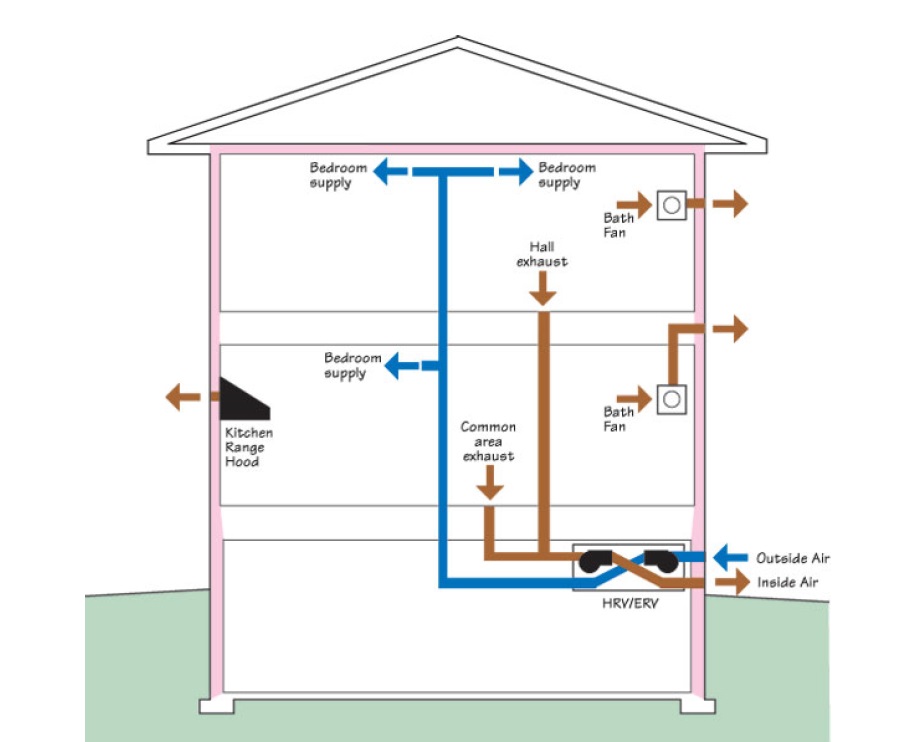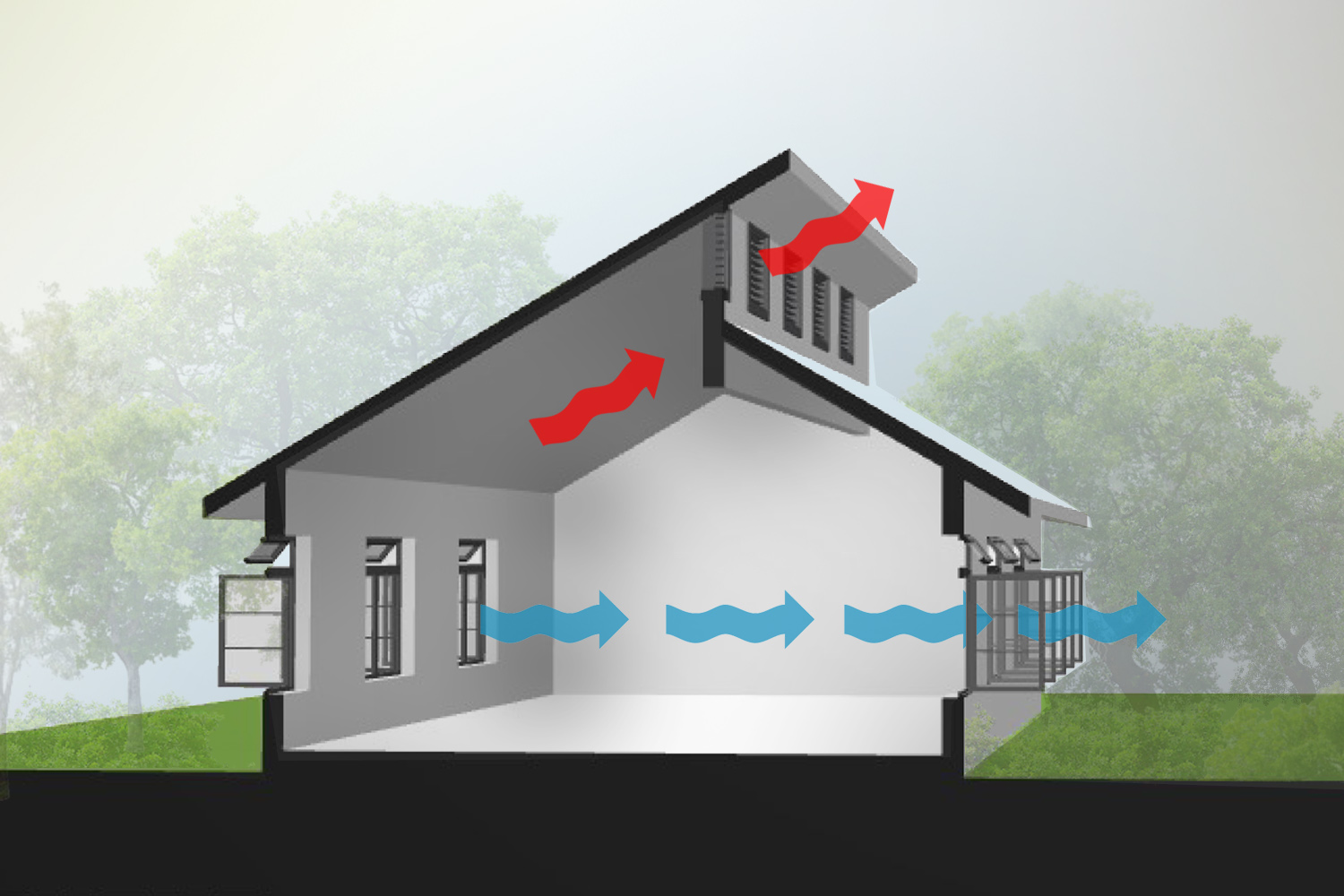Understanding the Value of Home Ventilation for a Healthier Living Atmosphere
Home air flow plays a necessary role in preserving a healthy living environment. It promotes the exchange of indoor and exterior air, which is essential for boosting air top quality. Without proper air flow, homes can come to be breeding premises for allergens and toxins. The consequences of poor air circulation can be considerable. This brings up the questions of exactly how homeowners can efficiently execute ventilation strategies to protect their wellness and health. Comprehending these approaches is essential.

The Fundamentals of Home Ventilation
Home air flow acts as an essential part of interior air high quality and comfort. It includes the procedure of trading stale interior air with fresh exterior air, therefore lowering humidity and managing temperature. Correct air flow systems can include all-natural methods, such as open windows and vents, along with mechanical systems, such as exhaust followers and air exchangers. Efficient home air flow aids stop concerns like interior mold growth and the build-up of hazardous fragments. It likewise improves overall power performance, as well-ventilated rooms can keep comfy temperatures with much less reliance on home heating and cooling systems. Comprehending the essentials of home ventilation is important for homeowners seeking to develop a much healthier living setting on their own and their households.

Typical Resources of Indoor Air Air Pollution

Numerous might not recognize it, indoor air pollution can stem from different resources within a house. Usual factors include unpredictable natural compounds (VOCs) emitted from paints, solvents, and cleansing items. Family home appliances, such as gas stoves and fireplaces, can launch dangerous gases like carbon monoxide gas and nitrogen dioxide. In addition, mold and mildew and mildew thrive in wet locations, launching spores that impact air quality. Family pet dander, allergen, and plant pollen can build up inside your home, more exacerbating contamination levels. Cigarette smoking indoors produces hazardous chemicals that stick around airborne. Lastly, building products, including asbestos and formaldehyde, can off-gas hazardous compounds. Recognizing these resources is crucial for maintaining a much healthier interior atmosphere and advertising effective ventilation approaches.
Wellness Impacts of Poor Ventilation
Indoor air contamination can have significant health implications, specifically when ventilation is poor. Poor air flow can bring about the build-up of unsafe pollutants, such as unstable organic compounds, mold and mildew, and particulate matter. This build-up may lead to respiratory system problems, including asthma, allergic reactions, and persistent obstructive lung disease. Individuals may experience symptoms like frustrations, fatigue, and irritability of the eyes, nose, and throat. Susceptible populations, such as children and the elderly, are at greater danger for extreme health and wellness impacts. Long-term direct exposure to badly ventilated environments can also contribute to extra serious conditions, including heart diseases. Subsequently, guaranteeing proper ventilation is important for maintaining a healthy and balanced living setting and lowering the threat of wellness complications connected with interior air contamination.
Efficient Ventilation Methods for Your Home
Correct ventilation is necessary for keeping a healthy interior atmosphere, and carrying out effective techniques can greatly boost air top quality. Property owners can start by making certain that exhaust fans are set up in washrooms and cooking areas to eliminate excess dampness and smells. Opening up windows routinely enables fresh air to circulate, especially during moderate weather condition. In addition, utilizing air cleansers with HEPA filters can aid catch air-borne pollutants. For homes with heating and cooling systems, maintaining HVAC systems and transforming filters regularly is crucial for peak efficiency. Incorporating all-natural ventilation strategies, such as cross-ventilation, can additionally boost air flow. Finally, securing any leaks in home windows and doors stops unwanted drafts, which can interfere with controlled airflow, eventually bring about enhanced interior air top quality and convenience.
Maintaining Optimum Air Top Quality Year-Round
To keep ideal air high quality year-round, property owners need to take on a positive strategy to managing their interior atmosphere. On a regular basis keeping track of interior air top quality is vital; this consists of monitoring for pollutants such as dust, mold, and volatile organic substances (VOCs) Implementing reliable air flow systems, such as exhaust followers and air purifiers, can considerably lower air-borne impurities. Furthermore, regular upkeep of a/c systems guarantees peak performance and air blood circulation. Home owners need to also take into consideration moisture degrees, as extreme dampness can result in mold and mildew development. Seasonal changes may necessitate modifications in ventilation strategies to fit differing exterior air quality. By prioritizing these methods, property owners can produce a much healthier space, promoting general well-being for all residents throughout the year.
Frequently Asked Concerns
Just How Can I Tell if My Home Requirements Much Better Ventilation?
To figure out if a home calls for better ventilation, one should observe signs such as consistent moisture, mold and mildew development, musty odors, condensation on home windows, or increased allergy signs, showing inadequate air flow and possibly bad interior air high quality.
What Are the Indicators of Poor Indoor Air High Quality?

Can Houseplants Improve Indoor Air High Quality Efficiently?
The effectiveness of houseplants in enhancing interior air top quality is discussed. While some studies recommend they can absorb toxic substances and produce oxygen, their total effect might Home Ventilation Melbourne be very little contrasted to proper ventilation and air filtration systems.
Exactly how Typically Should I Change My Air Filters?
The regularity of air filter changes commonly depends upon use and filter type. Typically, it is recommended to replace filters every three months, though families with allergies or animals may need even more regular adjustments for ideal performance.
Exist Any Certain Air Flow Equipments for Allergy Sufferers?
Many ventilation systems, such as HEPA-filtered units, properly decrease allergens in the air. Home Ventilation Melbourne. These systems trap pollen, dust, and family pet dander, giving allergic reaction sufferers with a cleaner, much healthier indoor environment while taking care of air quality successfully
It promotes the exchange of outdoor and indoor air, which is important for improving air quality. Home ventilation offers as an important component of interior air top quality and comfort. It involves the process of exchanging stale interior air with fresh exterior air, thereby lowering humidity and controlling temperature level. Interior air pollution can have significant wellness ramifications, especially when air flow is poor. Appropriate air flow is necessary for maintaining a healthy and balanced interior environment, and carrying out efficient methods can significantly enhance air quality.